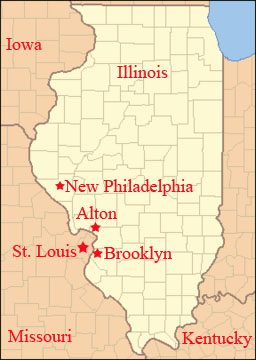
Brooklyn was established in the 1820s across the Mississippi River from St. Louis and the slave state of Missouri. It was started as a settlement of African Americans escaping slavery, and later became the first black town in America to be incorporated. The growing town was also called Lovejoy in honor of abolitionist Elijah Lovejoy, who was killed by a pro-slavery mob in nearby Alton, Illinois, in 1837.
Brooklyn grew as a community of craftspeople, laborers, and their families. A plat of the town was filed in 1837 and in 1873 it became the first African-American town to be incorporated. The goals of a new archaeology and historical research project are to understand how ethnicity, class, religion, racism, and developing markets influenced the ways in which individuals and families of this community made choices in shaping their natural, social, and built environments and in developing particular social traditions and economic strategies.
An interdisplinary, collaborative research project is underway that includes the University of Illinois (UI) Departments of Anthropology and African American Studies, the Illinois State Archaeological Survey (ISAS) (formerly called the Illinois Transportation Archaeological Research Program, or ITARP), and the Illinois State Museum (ISM), working in coordination with the Historical Society of Brooklyn (HSB). An additional overview is provided in this excerpt of a publication entitled "Examining Structural Racism in the Jim Crow Era of Illinois," in The Materiality of Freedom: Archaeologies of Post-Emancipation Life, edited by Jodi Barnes, pp. 173-189, University of South Carolina Press (2011).
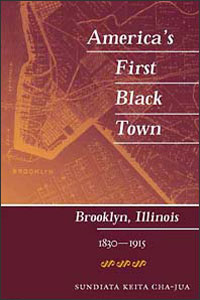 Prof. Sundiata Cha-Jua at UI provides an excellent, in-depth analysis of the documentary and oral histories of Brooklyn in America's First Black Town: Brooklyn, Illinois, 1830-1915 (University Press of Illinois, 2000).
Prof. Sundiata Cha-Jua at UI provides an excellent, in-depth analysis of the documentary and oral histories of Brooklyn in America's First Black Town: Brooklyn, Illinois, 1830-1915 (University Press of Illinois, 2000).
Learn more about the history and heritage of Brooklyn's families and residents from the Historical Society of Brooklyn's heritage web site.
Visit our Web 2.0 interactive portal for this Brooklyn project, which is under construction with the support of the University of Illinois' Community Informatics Initiative. |
The Historical Society of Brooklyn has created a Paypal interface so you can make a tax-deductible donation online to support their initiatives and efforts to preserve and celebrate the community's rich heritage. Please follow this link to make a contribution, and many thanks for your support!
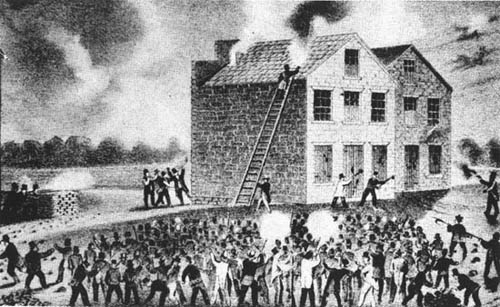
Wood engraving of pro-slavery riot in Alton, Illinois, on November 7, 1837, which resulted in the murder of Elijah P. Lovejoy. |
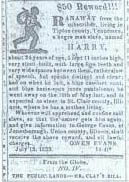
Brooklyn was established across the Mississippi River from St. Louis, Missouri, as a settlement of free and enslaved African Americans fighting against and escaping bondage. An anti-slavery activist named "Mother" Priscilla Baltimore encouraged eleven families of free and enslaved African Americans to depart the area of St. Louis and establish this community in 1829. While it grew as a community of both African Americans and European Americans through the 19th century, by the time of its incorporation in 1873 Brooklyn's population consisted largely of African-American residents engaged as artisans, craftspeople, merchants, farmers, laborers, and their families (Cha-Jua 2000: 31-32). Brooklyn's population grew through the 19th century, with approximately 200 African-American residents in the 1840s and 1850s. By the time of the 1880 census Brooklyn was home to 371 African-American and 203 European-American residents (2000: 45, 85). As a town dominated by such proportions of African American residents, it was the first Black town in America to be incorporated under a state legal system.
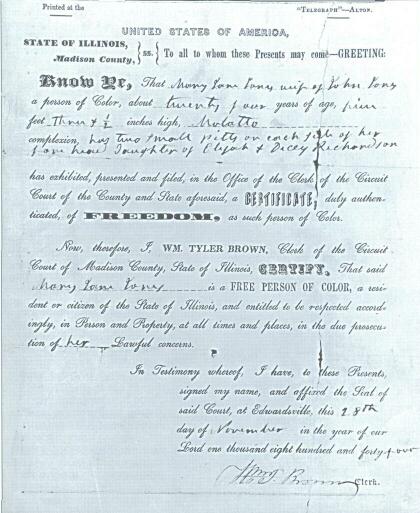
Example of a certificate of free status for a formerly enslaved individual in Illinois, 1844. |
One of the main goals of this research project is to add a new perspective to our understanding of the changing relationships between whites and blacks in a demographically integrated community over the course of the antebellum and postbellum eras. This project will provide highly valuable data comparisons with the historic site of New Philadelphia, in Pike County, Illinois. New Philadelphia, founded by Frank McWorter in 1836, was the first town in the United States to be planned in advance and legally registered by a plat and town plan filed by an African American. The team of researchers focusing on that community in Pike County are exploring the same research questions as those raised here in regard to Brooklyn's history. As Prof. Sundiata Cha-Jua observes: "The communities initiated by Free Frank and 'Mother' Baltimore had much in common; both emerged from African American self-activity, and both became spaces hospitable to Blacks fleeing the fetters of slavery. During this period, Brooklyn differed from New Philadelphia mainly because it was a majority-Black town and offered the opportunities to join organizations and participate in Black-controlled institutions" (Cha-Jua 2000: 35). "Perhaps Brooklyn, during the antebellum period, more closely resembled what Free Frank [McWorter] had envisioned" for New Philadelphia (2000: 35).
Brooklyn was very active in the "underground railroad" of African Americans escaping bondage in the antebellum. Ms. Baltimore, a formerly enslaved laborer, became active in the Methodist church and later assisted the influential Reverend William Paul Quinn in establishing a Methodist church in Brooklyn (Cha-Jua 2000: 32). In 1836, Quinn Chapel African Methodist Episcopal (A.M.E.) Church was built and established in Brooklyn as the first A.M.E. church in the Midwest region (Cha-Jua 2000: 35-40). This church, under Rev. Quinn's leadership, was a known hub of activities advocating abolition and aiding escapees, as were a series of strategically placed A.M.E. churches throughout the Illinois region (Glennette T. Turner, The Underground Railroad in Illinois, Newman Educational Publishing, 2001: 25, 34, 71). Antioch Baptist Church, built in Brooklyn in 1838, was also active in these efforts. Brooklyn's roles in assisting individuals escaping from slavery and in supporting abolition were also evident in the fact that the community was also called "Lovejoy." Elijah Lovejoy was a Presbyterian minister, journalist, and newspaper publisher who became an ardent and vocal abolitionist. He was murdered and his publishing house and printing press were destroyed by a pro-slavery mob in 1837, at Alton, Illinois, just 20 miles north of Brooklyn (2001: 77).
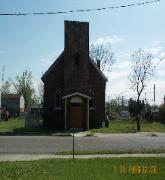
Quinn Chapel A.M.E. Church today. |
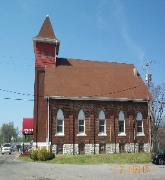
Antioch Baptist Church today. |
Prof. Cha-Jua's (2000) study of the history of Brooklyn shows evidence that the community was established and grew with ideals of solidarity and self-determination, but that economic opportunities were channeled away from the town over time as a result of racism and political corruption. The town was initially attractive to African Americans escaping slavery who wished to live in a community with a majority of African-American residents. In the postbellum period, Brooklyn presented newly-arriving African American residents with the promise of participating in the economic growth of industrialization and new jobs in the region surrounding St. Louis and its transportation hubs of river and rail (2000: 44). However, that promise proved fleeting. As new industrial employment grew in the East St. Louis region of Illinois, those opportunities were not made available to workers living in Brooklyn, likely due to racial prejudices by commercial and industrial operators against such an African-American community. Capital was invested in other areas in the region, despite the available workforce residing in Brooklyn and its convenient location along roadway and river transport routes. Illinoistown lay just to the south of Brooklyn and evolved into the industrial hub of East St. Louis in the late 1800s, with commercial enterprises that included extensive coal production. Just as New Philadelphia, in Pike County, Illinois, was bypassed by the economic advantages that a railroad connection would have provided, Brooklyn was bypassed by railroad, economic, and employment opportunities that were instead channeled to neighboring East St. Louis (2000: 41). "The failure to secure a railway was disastrous for a community's future. New Philadelphia's dissolution in 1885 resulted from its inability to attract a rail line in 1869. . . . [A]lmost none of the all-Black towns obtained a railroad" (2000: 41-42).
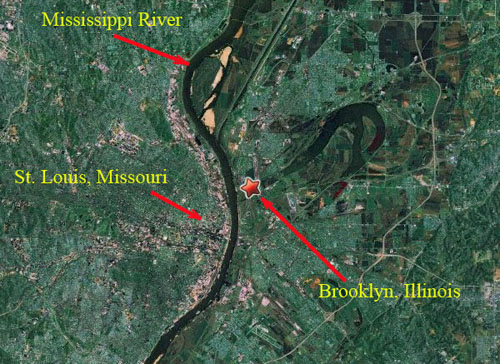
Satellite view of "American Bottom" region and location of Brooklyn. |
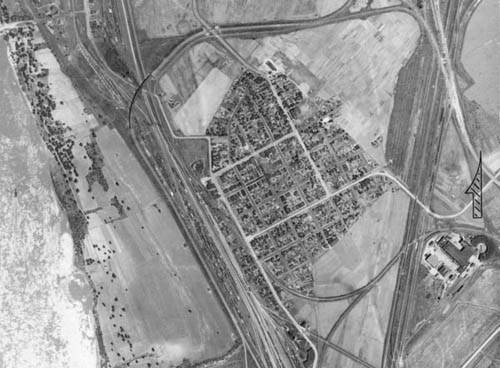
1940 aerial view of Brooklyn from the U.S.G.S. archives. |
Archaeological and surface surveys have established that the archaeological record of Brooklyn lies intact beneath the extensive open spaces of current-day residential parcels. ISAS conducted a recording survey of the Brooklyn cemetery, which was designated as site number 11S1233. Excavations at an adjacent site containing the remains of a late prehistoric period deposit (the Janey B. Goode site, 11S1232) have shown that archaeology sites remain intact in this general area, buried beneath layers of 20th century fill (Galloy 2003; Koldehoff and Fulton 2005). No archaeological investigations of the community of Brooklyn were conducted before the initiation of this proposed, multi-year project (Koldehoff and Fulton 2005). Researchers working with ISAS, UI, and HSB have gathered deeds, census data, tax records, oral histories, and other primary and secondary sources. The earliest deed references were geo-referenced on the current landscape of the town, and correlated with census data over the decades of the antebellum and postbellum periods to indicate the most likely locations of the earliest and later households in Brooklyn and changes in residential and business locations over time. A collaborative, long-term project has been lauched by HSB, UI, ISAS, and ISM to research the archaeological and historical data of this nationally significant community. Dr. Joseph Galloy and a crew of archaeologists with ISAS excavated test units and shovel test pit surveys in several resdiential lots of the existing town in the summer of 2008. These surveys and test units demonstrated that the archaeological record of Brooklyn's residents from the earliest years of the community onward exists intact beneath the extensive open spaces of current residential properties. Future field work should include additional surface surveys, geophysical surveys, and excavations to uncover and fully research the past households and business locations of this remarkable community.
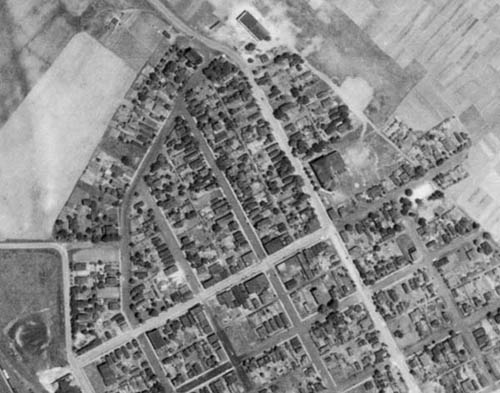
1940 aerial view with close up of "Upper Brooklyn" section which overlies earliest house sites of the settlement. |
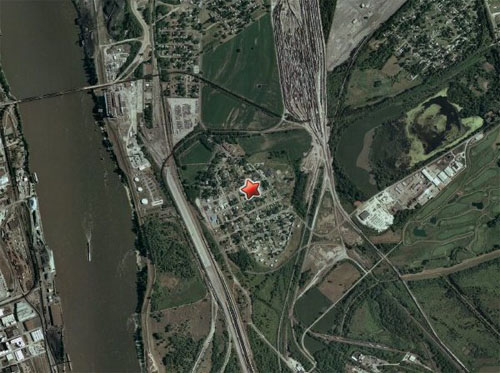
Aerial view of Brooklyn today. |
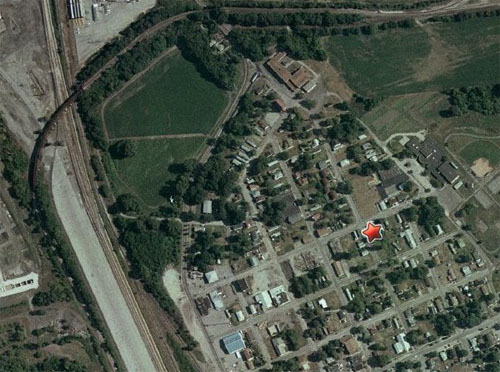
Recent aerial view with closer perspective of Upper (northern) section of Brooklyn, where earliest residences were located. |
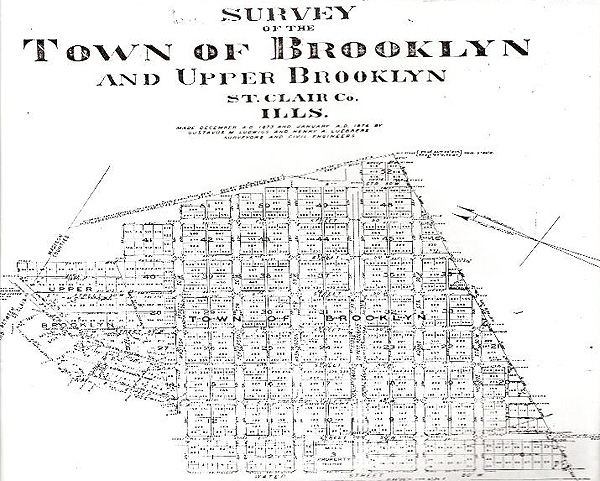
Survey map, December 1873, by Gustavus M. Ludwigs and Henry A. Luebbers, Surveyors & Civil Engineers. North direction and "Upper Brooklyn" are to the left on this map's orientation. |
|





